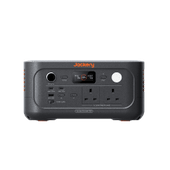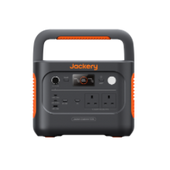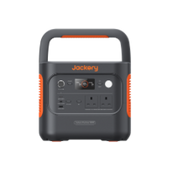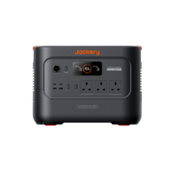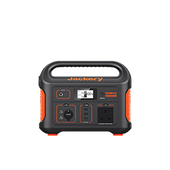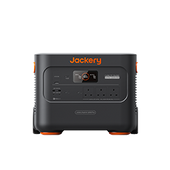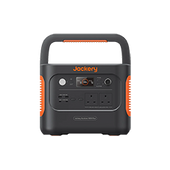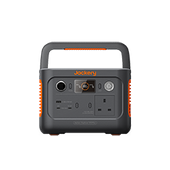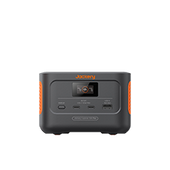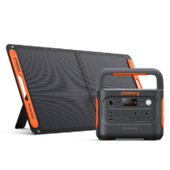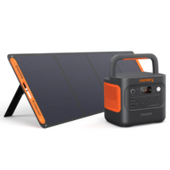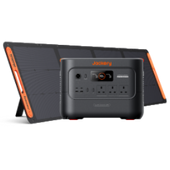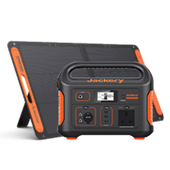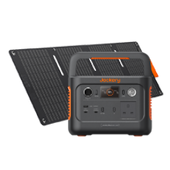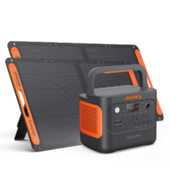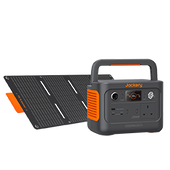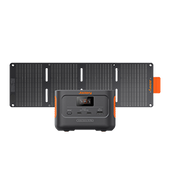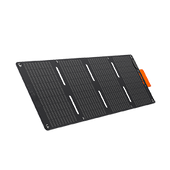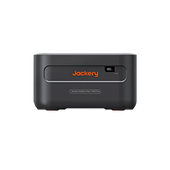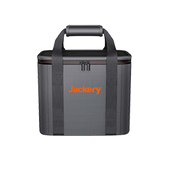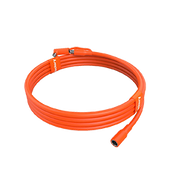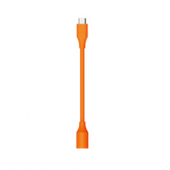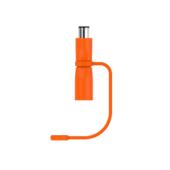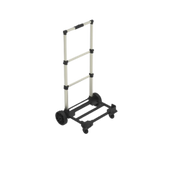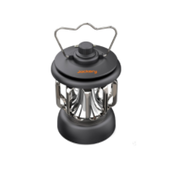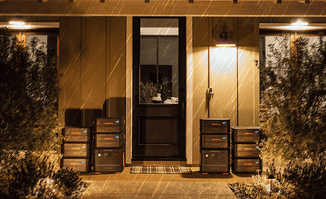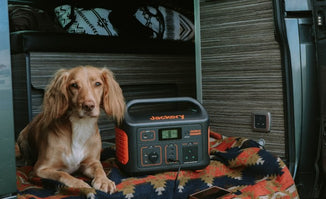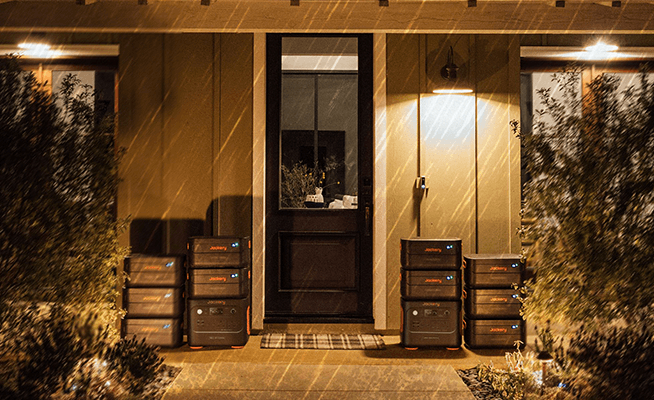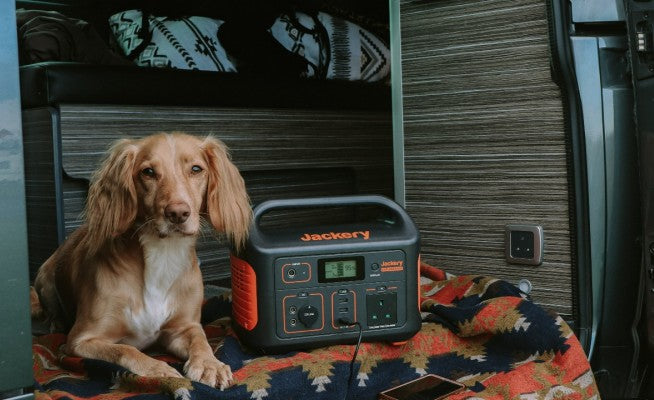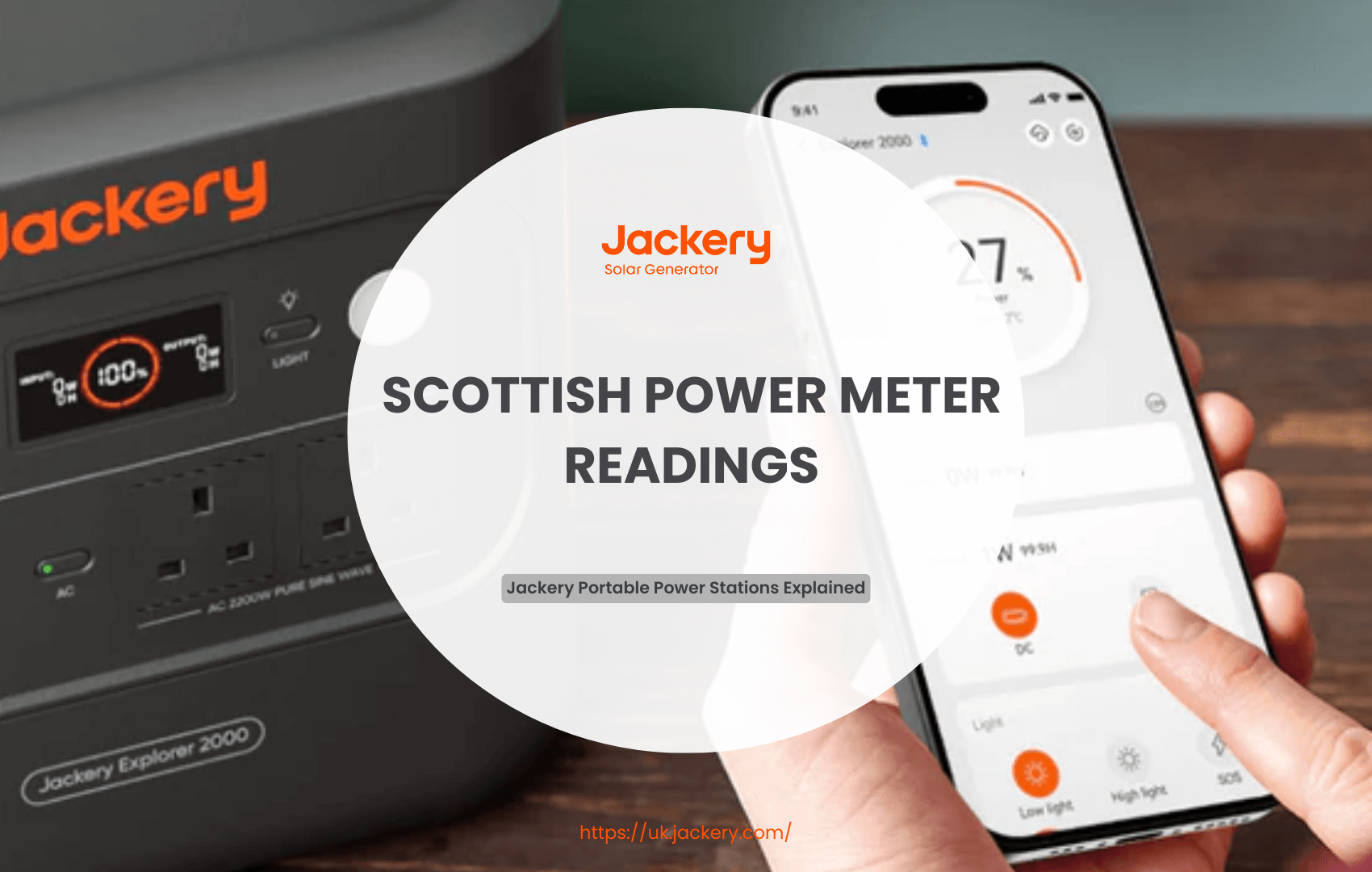If you know how to read your Scottish Power meter, you may avoid getting projected bills and pay for the energy you consume. It's essential to submit accurate readings regularly, regardless of the type of meter you have.
This guide informs ScottishPower customers about the types of meters they may have, how to read them, and the procedures for submitting readings. We'll also assist you in reading your energy bill and explain why it's crucial to do so often. This article will keep you up to date and in charge of your energy use and prices, from the advantages of smart meters to step-by-step instructions on how to read them.
|
Key Takeaways: |
|
Overview of Scottish Power Meters
ScottishPower is a major energy company in the UK, supplying gas and electricity to millions of homes across the country. The type and operation of your energy meter are essential for maintaining accurate bills and ensuring safety rules are followed.
There are two main types of meters: traditional and smart. The UK government is pushing for all old meters to be replaced with smart meters by 2025, which is why they are becoming more common. These high-tech gadgets automatically provide meter readings, reducing mistakes and guesswork in billing.
However, you still need to submit readings manually with conventional meters. ScottishPower supports both kinds of meters and provides tools and services to make reading, reporting, and monitoring use easier.
Meter Readings For Accurate Billing
Ofgem requires ScottishPower to come and take meter readings if our client is unable to deliver them to us. Having frequent meter readings enables us to provide you with timely and accurate invoices. Smart meters will automatically submit readings and ensure correct billing, so schedule a smart meter visit now.
If you haven't been submitting meter readings or your smart meter isn't responding, a meter reader will visit to read it on occasion. To limit the number of visits, ensure that you provide meter readings regularly. Alternatively, consider having a smart meter that automatically gives us readings, so you don't have to.
Safety Inspection
If you or your smart meter provider regularly provides us with readings, ScottishPower will only visit when your meter is required for a safety check. As your energy supplier, ScottishPower ensure that your meter fulfils the strict safety requirements stipulated by Ofgem. They undertake safety checks on all meters to ensure that you and your property are safe. ScottishPower always conducts an in-person safety assessment on your meter, even if you have a smart meter or provide meter readings online.

Why Are Meter Readings Important?
There are two kinds of gas and electricity meters: standard analogue meters and smart meters. Smart meters automatically transmit us frequent meter readings, eliminating the need for you to do so. However, there are a few scenarios in which you will still need to give meter readings from your Smart meters, such as a family loss or moving house.
If you have conventional energy meters, please provide ScottishPower with frequent meter readings so that they can accurately determine the amount of energy you are consuming. You must submit your energy supplier's frequent meter readings to ensure that they bill you accurately and that you pay the correct amount for the gas and electricity you use at home.
Why Give a Meter Reading?
If you, like around 65% of families, are on a regular variable tariff, your yearly costs will be reduced by 7% on July 1. To ensure that there are no anomalies in the amount you are charged at the current higher rate, please provide your provider with a meter reading on or around July 1. This prevents your provider from calculating your use and assuming you used more at the new, higher rate than you actually did.
There will be winners and losers in this situation, as some will benefit and others will lose compared to what their provider would have projected, but if you take a meter reading, you'll know it's fair.
What You Need to Do
You must take and submit meter readings every three months beginning with your certification date. This information can be found in the letter you received from us upon approval for the RHI program.
When to Take Readings
Meter readings must be taken at the same time every quarter (or every month for larger installations). You may take the reading at any time during the three days before or after that date. (For example, if your reading date is July 10, you may schedule it any time between July 7 and July 13).
Things to Check
To begin, ensure your meters are correctly placed.
Before taking any reading, you should ensure that:
Your meter is set to collect readings in kWhth. If your meter measures in MWhth (megawatt hours of heat), you must convert the data.
The meter has the correct number of decimal places; you may compare the opening and prior readings on the same meter.
The meter serial number matches the one on your application form.
Submitting Periodic Data
To submit periodic data, first log in to the Non-Domestic RHI Register and then pick the Periodic Data option at the top of the page.
Types of Scottish Power Meter Readings
The first step in sending in correct readings is to determine the type of meter you have. Most ScottishPower customers have either old-fashioned (non-smart) meters or new smart meters. You have to read traditional meters by hand, and they come in several styles, such as dial, digital, and imperial.
On the other hand, smart meters provide usage data automatically, which reduces the chance of human error and ensures that bills are accurate. However, even with smart meters, you may still need to read them manually from time to time, such as when you move or if any issues arise with the technology. Knowing the distinctions helps you read the meter accurately and keep track of your energy costs.
If your meters feature an analogue display or dials, they are not smart meters. With these meters, you'll need to provide us with frequent readings so we can calculate the amount of energy you're consuming. We will prompt you for these readings and then email you a statement with your most recent balance. Example photos are shown below:

Types of Traditional Gas Meters and How to Read Them
There are three types of traditional gas meters:
Digital Metric Meter
Note down the five digits presented from left to right. Ignore the number(s) following the decimal point, which may appear in red.
Imperial Meter
Note down the four digits presented from left to right. Ignore the numbers shown in red.
Dial Meter
Read the four dials from left to right along the bottom row alone, ignoring any other dials, and record the number closest to each pointer. When the cursor is between two integers, write down the lowest one. For instance, if the pointer is between 9 and 0, put down 9.
Each dial spins in the opposite direction of the previous one, so keep track of which way each turns.
Types of Traditional Electricity Meters and How to Read Them
There are four types of electricity meters:
Single-Rate Meter
A single-rate meter will charge you the exact cost for both daytime and nighttime energy use. Your reading will appear on a single display. Note down the five digits presented from left to right. Ignore the final number(s), which may be shown in red.
Two-Rate Meter
A two-rate meter charges you differently for daytime and nighttime energy consumption, and your readings are shown on two separate screens. Write down the numbers in the top and bottom rows from left to right. Ignore the final number(s), which may be shown in red.
Two Rates, a Single Display Meter
Some two-rate meters feature a single digital display that alternates between the various rate readings in a cycle, or require you to click a button to cycle between the readings for each rate.
Dial Meter
Read the first five dials from left to right, disregarding the one labelled 1/10. Write down the number that the pointer recently passed, using the lowest of the two values on each side of the pointer. It's worth noting that the numbers on each dial may cycle between clockwise and anticlockwise.
Smart Meters
Smart meters are gas and electricity meters that self-read and include an in-home display that shows how much energy you're consuming in pounds and pence. Unlike conventional meters, they automatically read and report meter readings to your energy provider, ensuring that you get accurate bills and pay only for the energy you consume.
However, there are specific occasions when we would request Smart meter readings, such as after a family loss or when you move house. Some first-generation smart meters are incompatible with all energy providers; therefore, they cannot communicate readings.
How Do I Read My Scottish Power Bill?
If you're having trouble understanding your Scottish Power meter reading, you're not alone. We've taken a typical Scottish Power energy bill and highlighted where to find the critical information.
This ScottishPower example bill may not appear identical to yours (bill information differs depending on your meter type and mode of payment), but the structure will be similar.
If you're having problems understanding your ScottishPower energy bill, you're not alone. We've taken a typical Scottish Power energy bill and highlighted where to find the important information.

The first page of your statement will include the headline data for your account, including your account balance, monthly payment, and past meter readings. It will also display your tariff name and how this bill's reading was obtained. There is also a QR code that may be scanned with your phone to get information about your tariff and consumption.

The second page of your bill contains the fundamental information regarding your tariff that you would need to know if you were considering changing it. The majority of it is accessible on the first page; however, it is more easily found on the second.

You may view a breakdown of your consumption and how it translates into the amount you've been charged for this time by multiplying your kWh by the unit rate on your tariff. Your electricity supply number (MPAN) and/or gas supply number (MPRN) are found in the bottom left corner of your gas or electricity statement. Your MPAN is the one that begins with an 'S', while the MPRN is simply a string of 10 digits. The remainder of the bill provides information on energy conservation, but it is not tailored to your specific use.
Things to Consider for Scottish Power Meter Readings
Even if your smart meter automatically transmits readings to your provider, you may need to check it manually. If you do not have a smart meter, your provider will provide you with an estimated bill. This might imply that you end up paying for more than you actually used. Alternatively, you may pay less than you should, in which case you will have to pay the difference later.
Ofgem requires ScottishPower to come and take meter readings if our client is unable to deliver them to us. Having frequent meter readings enables us to provide you with timely and accurate invoices. Smart meters will automatically submit readings and ensure correct billing, so schedule a smart meter visit now.
If you haven't been submitting meter readings or your smart meter isn't responding, a meter reader will visit to read it on occasion.
To limit the number of visits, ensure that you provide meter readings regularly. Alternatively, consider purchasing a smart meter, which will automatically provide us with readings so you don't have to.
Electric 1 - Rate Meter
Record the numerals as you read them, from left to right. Include any zeros at the beginning, but disregard any red digits or those that occur after the decimal point.
Electric 2 - Rate Meter
If your meter has two rows of numbers, as seen below, it is a 2-rate economy seven or white meter.
One reading is for your lower-cost night-rate power, which will be labelled 'low' or 'rate 1'.
The other is for your day rate, which is designated 'regular' or 'rate 2'.
Record the numerals as you read them, from left to right.
Include any zeros at the beginning, but disregard any red digits or ones that appear after the decimal point.
Electric Dial Meter
An electrical dial meter has five or more dials. They take turns pointing to numbers ranging from 0 to 9. Start with the far-left dial and write down the number that the pointer has just passed. For example, if the pointer falls between 4 and 5, you should put down 4.
If the cursor is right above a number, write it down and highlight it.
If you underlined a number, look at the next dial to the right. If the pointer on that dial is between 9 and 0, lower the number you've highlighted by one. For example, if you typed '4' first, alter it to '3'.
Gas Imperial Meter
If your petrol meter displays a row of five digits, it is an imperial digital meter.
Record the numerals as you read them, left to right, including any leading zeros.
Ignore any numbers in red or those that follow the decimal point.
Gas Metric Digital Meter
A metric domestic meter is defined as a row of six numerals.
Record the numerals as you read them, left to right, including any leading zeros.
Ignore any numbers in red or those that follow the decimal point.
Gas Dial Meter
A gas dial meter has four or more dials. They take turns pointing to numbers ranging from 0 to 9.
Start with the far-left dial and write down the number that the pointer has just passed. For example, if the pointer falls between 4 and 5, you should put down 4.
If the cursor is right above a number, write it down and highlight it.
If you underlined a number, look at the next dial to the right. If the pointer on that dial is between 9 and 0, lower the number you've highlighted by one. For example, if you typed '4' first, alter it to '3'.
How To Submit a Scottish Power Meter Reading?
The simplest method is to photograph your meters, allowing you to retrieve the data easily. Then, log in to your online account and enter the readings.
Most allow you to submit readings as text messages or via mobile applications like WhatsApp. You may also contact them; most offer automated phone lines where you can enter the readings to avoid joining a wait or cluttering up the lines for those who want assistance.
Who Will Inspect My Meter?
We collaborate with Calisen Metering Services to perform meter readings and inspections. ScottishPower recognises that it is critical to know who is entering your house; therefore, they require all readers to wear an ID badge. Their ID badge will have the business name 'Calisen Metering', a picture, the reader's name, expiration date, reference number, and the Calisen phone number, 0345 612 2121, which you may use to verify their identification. To learn more about Calisen metering services, visit www.calisen.com.
When Will Someone Come and Examine My Meter?
Many energy retailers employ Calisen metering services to do meter checks, so they'll stop by while they're performing other inspections in your neighbourhood. This means ScottishPower cannot guarantee a specific day and time for a representative to visit, but they'll ensure a warning is given before visiting your house. If your meter is outdoors, they may examine it without entering your home. If your meter is located indoors, someone must be present to provide them access for the examination.
How Can You Help Make the Inspection More Efficient and Simple?
ScottishPower requests that your meter be free of obstructions and, if necessary, keys be made accessible to meter readers to ensure a smooth and efficient process. Their readers must return every three months until they get access to the meter or receive a reading.
Jackery Portable Power Stations for Saving Your Electric Bills
The increase in ScottishPower prices, particularly under the UK's energy price cap changes, makes energy-saving strategies more critical. A Jackery Portable Power Station can help reduce your electricity bills by allowing you to take advantage of Time-of-Use (TOU) tariffs and free solar power, effectively bypassing the most expensive peak rates.
ScottishPower offers specific tariffs and programs, like the Power Saver program and their EV Saver tariff, which are based on Time-of-Use (TOU) rates. This is the primary way a Jackery can save you money. You plug your Jackery unit into the wall and charge its battery during the cheapest periods, such as late at night (e.g., midnight to 5 am on their EV tariff) or during the Half-Price Weekends (Saturday and Sunday, 11 am - 4 pm).
You then unplug the Jackery from the wall and use the stored, cheaper electricity to power essential devices and appliances during the most expensive peak-demand times (typically weekday evenings).
Jackery Explorer 3000 v2 Portable Power Station
The Jackery Explorer 3000 v2 can help you save on electric bills through two main strategies: Time-of-Use (TOU) arbitrage and maximising solar energy consumption.

Time-of-Use (TOU) Arbitrage: Many utility companies employ a Time-of-Use pricing structure, where the cost of electricity fluctuates throughout the day, typically being highest during "peak" hours (e.g., late afternoon/evening) and lowest during "off-peak" hours (e.g., overnight). You can use the unit's Charging Plan feature via the smart app to schedule the power station to charge from the wall outlet only during the cheapest, off-peak hours (e.g., 10 pm to 6 am).
You can then power your high-draw appliances or essential devices (like refrigerators, fans, or lights) using the battery during the expensive peak hours, effectively avoiding the high electricity rates. By shifting your power consumption from the grid's peak rates to the battery's stored power (charged at off-peak rates), you reduce your overall cost for the electricity you use.
Maximising Solar Energy Consumption: When paired with Jackery SolarSaga 200W solar panels (sold separately), the Explorer 3000 v2 functions as a solar generator. The unit has a mode that prioritises using solar energy to supply your home or charge the power station first, reducing your reliance on expensive grid electricity.
By capturing free energy from the sun with the solar panels, you offset the amount of electricity you have to purchase from the utility company. This is free energy once the initial cost of the generator and panels is recovered.
High Capacity and Output for Home Backup: With a large 3,072Wh capacity and 3,600W continuous output, the power station can run essential high-wattage appliances (like a refrigerator, lights, and Wi-Fi router) for an extended period. This capability is crucial for running your home on cheaper, stored energy during peak times or relying entirely on solar power, which directly lowers your utility consumption.
Jackery Explorer 2000 Plus Portable Power Station
The Jackery Explorer 2000 Plus, particularly when used as part of a Jackery Solar Generator 2000 Plus setup with compatible solar panels, can help reduce your electricity bills primarily through a process called solar energy shifting, also known as peak shaving.
The core strategy for saving money involves charging the power station for free with solar energy during the day and then using that stored, free electricity to select household appliances and electronics later, thereby reducing the amount of power you purchase from the utility grid.

Solar Charging Capability (with Solar Panels): The most significant saving feature is the ability to recharge the power station using compatible Jackery SolarSaga solar panels, converting sunlight into free electricity. This directly offsets the need for grid power. Jackery solar panels often feature high conversion efficiency (up to 25%), meaning they can charge the power station relatively quickly and efficiently, maximising the amount of free power captured.
Charging during Off-Peak: If your utility company uses Time-of-Use billing (where electricity is cheaper during certain "off-peak" hours, typically at night or midday), you can charge the Explorer 2000 Plus using the grid when rates are low. You can then use the stored, cheaper battery power to run high-usage appliances (like a refrigerator or fan) during expensive "peak" hours (often weekday evenings).
Reduced Grid Reliance: The unit's 2042.8 Wh (or 2 kWh) base capacity (expandable up to 12 kWh with additional battery packs) enables you to power everyday appliances, such as refrigerators, lights, Wi-Fi routers, laptops, and fans. By running these from the stored solar or off-peak power, you lower your consumption from the utility grid.
LiFePO4 Battery: The unit uses a durable Lithium Iron Phosphate (LiFePO4) battery, which is rated for a long lifecycle (e.g., 4000 cycles to 70%+ capacity). This longevity means the cost-saving benefits of the unit can be realised over many years, improving the overall return on investment.
Your Smart Meter Installation
A smart meter is an upgraded version of a regular gas/electricity meter that delivers us readings every half hour, daily or monthly. You may still contribute your own readings; the choice is yours. As we progress towards a greener future, old energy meters are being phased out, and smart meters are being placed in homes throughout the UK at no additional cost to users.
Smart Meter Installation in Four Easy Steps
Schedule your installation: Select an appointment time that works for you, either online or by phone.
Installation: Installation typically takes around an hour per metre.
Installation complete: Use your In-Home Display or the award-winning ScottishPower App to monitor your energy use in near real-time.
Assistance: If you have any problems, our knowledgeable staff will respond to your call within three minutes.
FAQs
The following are the frequently asked questions about the Scottish Power meter readings:
1. Can I submit my meter reading online?
The fastest method to send us a meter read is via our app or website. You may utilise our automated service to provide a meter read over the phone. All you need are your customer account number and meter readings.
2. How do I submit a meter reading?
The Open Electricity Market hotline is 1800 233 8000. After selecting a language, please press 4 to submit the meter reading.
3. How often should I submit meter readings to ScottishPower?
In the winter, bills are usually greater than in the summer. You can submit your meter readings by phone or online every three months using cash, cheque, or postal order. If you don't send in a meter reading, an estimated charge will be made.
4. How can I contact Scottish Power by phone?
345 270 0700
5. Why can't I submit an electricity meter reading?
You should verify the meter readings you are entering again to ensure they are correct, and then attempt to resend them. If verifying and resubmitting your meter readings doesn't work, get in touch with us, and we'll take care of it.
Final Thoughts
Staying updated about your Scottish Power meter, whether smart or conventional, ensures that you pay only for what you use. Submitting correct meter readings regularly helps to prevent anticipated bills, check your energy use and maintain compliance with Ofgem standards. Smart meters offer additional advantages, including real-time tracking and reducing the need for manual readings.
However, even with smart meters, periodic inspections and reports are necessary. Make the procedure fast and easy by using the ScottishPower app, website, or phone service. Understanding your meter type and how to read it enables you to gain more control over your energy use and costs.

